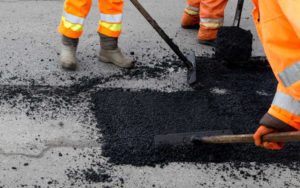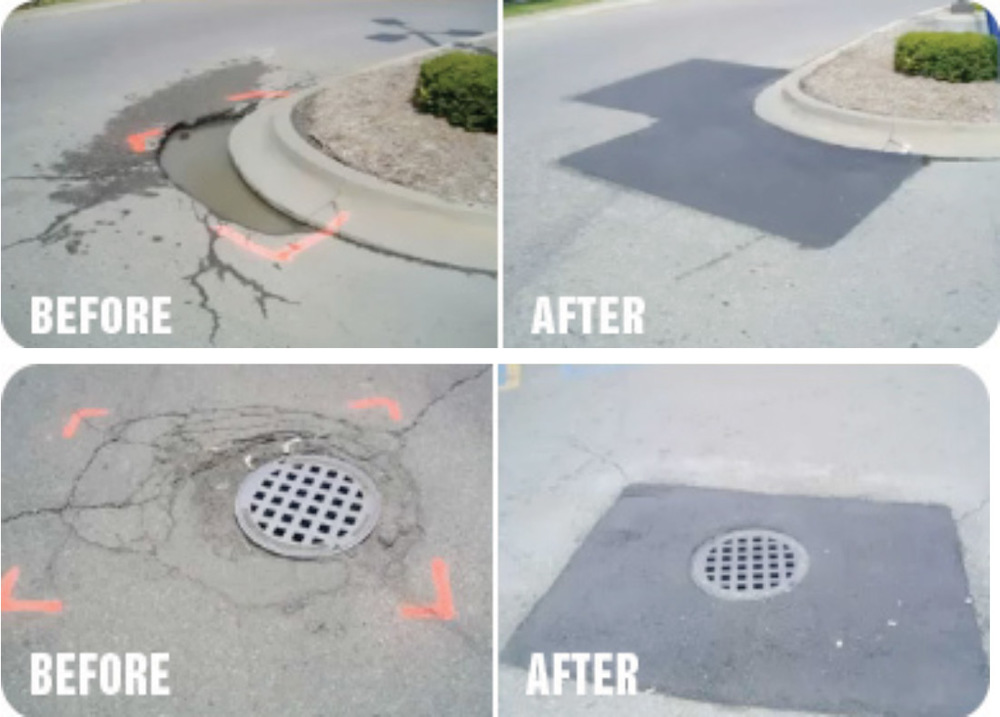Potholes cause numerous accidents on the road; they not only cause damage to vehicles; they also cause death. Potholes are caused by high amounts of traffic on the pavement, diesel spillages, mechanical damage by vehicle rims, accidents and fires, poor road design over certain subgrades such as expansive, among many things. They occur when the pavements are weakened. Weather changes often influence potholes repair. The Winter season is described as a prime time for asphalt damage due to the concurrent instances of melting and freezing on the pavement.
Asphalt repair on potholes is not an easy process, especially during the winter season, but it has to be done because your driveway presents a public safety hazard. If you repair potholes in cold weather or during the winter season, it would be best to use hot or warm mix asphalt.
Some of the most commonly asked questions and answers about pothole repair are as follows:
- What causes potholes? – Potholes form due to the expansion and contraction of water that penetrates the ground into the pavement. As vehicles’ weight continues to compress the already weakened pavement, pieces of the pavement get very weak, thus material breaking down from the weight, forming potholes.
- What material is used to repair potholes? – Since potholes form in all shapes and sizes, your pothole repair mix should also come in variation. The kind of asphalt mix you use for repair will determine the potholes’ durability.
- Who performs the process? – An asphalt contractor will perfectly repair potholes on your driveway. It is, however, important to do your research, ask questions and understand the contractor’s level of experience, among other concerns, before hiring them.
- How do you repair potholes on roads? – This is the most asked question with the most detailed process of properly repairing a pothole. The process involves a few stages, such as cleaning the pothole to eliminate broken pavement pieces, debris, and dirt. You then need to heat the pothole to remove any extra moisture present in the existing pavement and soften the area. Add the new asphalt, in this case, the hot mix, and compact it to increase resistance. Compressing creates a bond between the old and new asphalt pavement. Finally, allow the new asphalt to cool and any debris left around after repair swept away and the roadway is ready for use.
 Because of the hazardous nature of potholes on the road, people want to avoid more accidents. This pandemic time couldn’t be a perfect time for potholes repair. There are tips and advantages for pothole repair during this pandemic. The benefits are that there are very few people on the roads driving hence easy accessibility of the roads and parking lots. The repair process will then be carried out with efficiency. Also, outdoor working conditions such as road repairs have become safer than before.
Because of the hazardous nature of potholes on the road, people want to avoid more accidents. This pandemic time couldn’t be a perfect time for potholes repair. There are tips and advantages for pothole repair during this pandemic. The benefits are that there are very few people on the roads driving hence easy accessibility of the roads and parking lots. The repair process will then be carried out with efficiency. Also, outdoor working conditions such as road repairs have become safer than before.
For any commitment to improving the road and the environment, refer to the above tips that will help you fill potholes using asphalt paving, despite their size. For more information about types of potholes repair, the commonwealth is here to journey with you.







